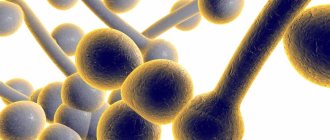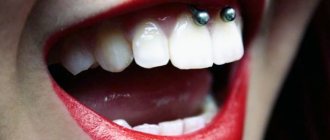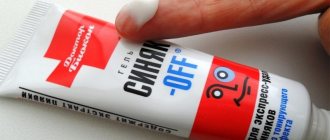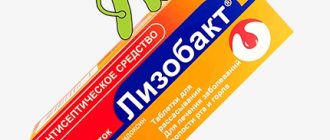general information
Streptodermia refers to a pathology caused by streptococci. If we talk about the external manifestations of the disease, blisters and purulent rashes that itch appear on the skin.
Streptoderma in children can occur in two different forms: acute and chronic. Acute is characterized by pronounced symptoms, and chronic - by periodicity.
According to the degree of damage, the disease is classified into superficial, deep and intertriginous. Each form has a specific feature.
Symptoms
If streptoderma occurs, what is the treatment? Before we know the treatment options, let's find out the symptoms. The disease in children occurs in extremely severe forms:
- temperature up to 39C,
- poisoning,
- large lymph nodes.
The texture of the skin may vary depending on the form of the pathology:
- Superficial. Initially, red spots form on the skin. After a couple of days they turn into blisters with a certain liquid inside. The blisters grow up to two cm in diameter, after which they rupture. Yellow crusts form in this area. After this, the skin in this area heals, and the pathology develops further.
- Dry streptoderma . This form usually occurs in boys. Light and pink spots up to 5 cm in diameter form on the skin. They are found everywhere on the body. After they disappear, scars may remain.
- Streptococcal infection. The pathology extends specifically to the corners of the lips; it is encountered when there is a deficiency of vitamin B. Small cracks form on the skin, causing discomfort. After some time, they form into pustules that become crusty. The child has difficulty consuming food, as it causes pain.
- Felon. In a situation where streptococcus spreads to the area around the nails, panaritium develops. Oddly enough, this disease is more often encountered by children at an early age who bite their nails.
- Streptococcal diaper rash. This form of pathology is typical for breastfed children. Blisters form in the folds of the skin.
Understanding how streptoderma begins to develop in children, treatment which requires timely contact with a dermatologist and the implementation of therapeutic actions, not a minute can be lost. If you constantly put off going to the doctor, the pathology can develop into a chronic form, and it will be almost impossible to achieve a final cure.
streptoderma, treatment
Symptoms of seizure
Signs of the disease appear in stages:
- small bursting bubbles form at the places where the lips close, and the tissues turn red;
- roughening of the skin and the appearance of cracks at the site of burst blisters;
- healing and inflammation of erosion sites;
- regularly bursting skin during conversation or eating - the wound begins to bleed, this process is accompanied by pain;
- discomfort during speech, brushing teeth and eating.
Proper treatment of swelling in the corners of the lips in children eliminates them in 2 weeks. At the same time, open wounds are an ideal breeding ground for harmful bacteria. Secondary infection causes more pronounced symptoms and increases the inconvenience of the little man. In this case, treatment is delayed.
When to see a doctor
Establishing a connection between the causes and treatment of a child’s lip jam is an important part of choosing an adequate and effective treatment regimen. JSC "Medicine" (academician Roitberg's clinic) in Moscow offers consultations with first-class pediatricians. You can make an appointment by phone, on the clinic’s website or in person at the address: Moscow, 2nd Tverskoy-Yamskoy lane, 10.
Causes
The causative agent of streptoderma, the photo of which you will find below, is group A streptococcus. However, it is worth noting that infection can only develop in a situation where certain factors are present:
- skin damage,
- lack of following basic hygiene rules,
- weak immune system,
- disruption of the endocrine system,
- dermatological diseases,
- depressive mood
- vitamin deficiency,
- constant washing of the skin, which leads to damage to the protective layer,
- strong influence of different temperature ranges,
- poisoning,
- circulatory disorders.
Diet and proper nutrition
When avitaminosis becomes the cause of eating up to a year, you should pay attention to nutrition. A lack of vitamin B leads to a number of problems in the child.
Therefore, it is worth introducing the following products into your diet:
- chicken meat;
- beef;
- eggs;
- dairy products;
- red fruits;
- vegetables;
- greenery.
How do herpes and angular stomatitis occur?
If a problem occurs at 2 years of age, you should immediately give up excessively salty, sour or spicy foods. It will only irritate the baby's skin. Therefore, try to stick to a simple diet. It is best to cut food into small pieces to make it easier for your baby to eat.
Therapy
Streptoderma has occurred ? Even in cases where the initial examination was carried out by a pediatrician, only a dermatologist can select therapy. Doctors in this field have an understanding of drugs with a narrow scope of action.
The first step is to limit the child’s diet. The course of treatment also involves avoiding water procedures, which can cause the spread of the disease. Healthy areas of the skin should be washed with a solution of chamomile, and damaged areas should not be touched at all.
The sick person needs to choose the right wardrobe, from which items of clothing made from synthetics and wool must be removed.
Doctors advise popping blisters that form on the skin with a disinfected needle, after which the abscess should be drained twice a day. Healthy areas of the skin are washed with a boron solution.
If crusts appear on the skin, they should be treated with antibacterial gels or ointments.
In more complex situations, many other medications may be prescribed:
- antibiotics for streptoderma of the tetracycline or chloramphenicol series,
- means that prevent the occurrence of an allergic reaction,
- means aimed at improving the body's immune system,
- vitamin preparations,
- antipyretic.
The set of medications must be discussed with the doctor. With the right treatment, the symptoms disappear within a week, but after the severe form is eliminated, scars may remain. This is what streptoderma looks like .
what does streptoderma look like?
How to treat lip jams in children?
The answer to the question of how to treat seizures in a child is not easy, since the disease can be successfully dealt with only with a correct diagnosis, using an integrated approach. Correct diagnosis is necessary not only in order to prescribe adequate treatment, but also in order not to confuse angulitis erosions with herpetic rashes or papules of syphilis. When diagnosing seizures in the corners of a child’s mouth, treatment may include external medications, tablets, vitamins and traditional medicine.
Angulitis - treatment, ointment
For candidal angulitis, the most popular drug is Fukortsin. This raspberry antiseptic solution is used to lubricate the corners of the lips and the skin around erosions 2-3 times a day to prevent the growth of yeast colonies on the face. Ointment for yeast infections:
- Levorin ointment;
- Lamisil;
- Nystatin ointment;
- Teymurov's pasta;
- Sulfur-salicylic ointment (2 percent).
To combat streptococcal anugulitis, a solution of brilliant green is used as a local antiseptic. In combination with brilliant green, antibiotic ointments are used:
- Erythromycin ointment;
- Syntomycin ointment.
In addition to antibacterial and antimycotic drugs, you can use ointments and creams with a healing effect to quickly restore the integrity of the skin:
- D-Panthenol;
- Levomekol;
- Methyluracil.
Medicines for seizures
Streptococcal angulitis rarely requires the use of antibiotics - the use of external agents with an antibacterial effect is sufficient, but in difficult cases, tetracycline can be used. When diagnosed with candidal angulitis, treatment includes taking antifungal drugs, the most popular of which is Fluconazole. The course of treatment with this drug should be at least 10 days, since surviving yeast will very quickly cause a relapse of the disease.
Angulite – vitamins
The correct answer to the question of how to cure seizures in a child necessarily includes a list of vitamins. The drug must necessarily include B vitamins and nicotinic acid (vitamin PP). The preferable option is to choose a balanced vitamin preparation designed for the age of the sick child. Particularly popular:
- Vitrum Kids;
- Centrum Children's Pro;
- Multitabs for children;
- Alphabet.
A balanced diet will help restore the required amount of vitamins in the body as much as possible and cure congestion in the corners of the child’s mouth. The baby's diet should include:
- fresh vegetables, berries and fruits, preferably local seasonal ones;
- grenades;
- avocado;
- greens - salads, parsley, dill;
- red meat;
- buckwheat, brown rice;
- fresh peas and green beans;
- eggs;
- products made from wholemeal flour;
- mushrooms;
- fermented milk products, cottage cheese;
- nuts.
Folk remedies for seizures
Traditional medicine is effective in diagnosing angulitis in children; treatment with pharmaceutical drugs can be supplemented with home remedies:
- Lubricating the area with tea tree, sea buckthorn, rosehip or avocado oil helps to quickly soften the skin and heal erosions. For the same purpose, honey, butter, cucumber juice, aloe or Kalanchoe, as well as the contents of Aevit capsules, can be applied to the wounds.
- An ancient folk remedy for treating stuckness in the corners of the mouth in children is earwax, which is used to lubricate the erosions.
- To disinfect wounds, you can use strong green tea, which is used to wipe the skin in the mouth area and the cracks themselves.
Causes of complications and re-infection
The reason for re-infection may be incorrect therapy when, for example, if you have primary criteria for improvement, you decide to stop therapy. The most important thing is to remember that you need to unquestioningly follow the advice and instructions of your doctor.
streptoderma complications
What can streptoderma be confused with?
Pyoderma
With pyoderma, the sebaceous and sweat glands are damaged. The rash appears in certain areas of the skin - parts of the body, scalp.
Herpetic rash
Herpes is characterized by the presence of blisters with constant inflammatory processes. They burst and provoke development.
Thrush or candidiasis
Candidiasis is characterized by erythematous papules or reddened, wet plaques. In the pathology under consideration, the lesion, as a rule, occurs in the mucous membranes or fold areas.
Manifestations of allergies
An allergic rash continues to occur as long as the influence is the causative agent of the allergy.
Types of disease
- Streptococcal impetigo. The most common standard form of the disease. A characteristic rash forms on the face, arms and legs. This form is also the most limited, since the pathogen does not move beyond the upper layer of the skin, which has certain protective mechanisms. The appearance of the integument does not change, only individual blisters with liquid appear on the reddened areas. Initially, the patient will experience itching, after which the blisters become darker, which helps the blister to crust over. The duration of this process reaches one week. However, it is worth remembering that if the rash resolves, bacteria are further transferred to healthy areas of the integument, which has its negative consequences for the sick person.
- Bullous impetigo. The rashes are located on the arms and legs and had a fairly impressive diameter. Once the blisters open, these areas of skin develop ulcers that can spread quickly.
- Streptococcal diaper rash. Most of the patients are young children and overweight people. The location of the rash is under the mammary glands, in the axillary folds, intergluteal or inguinal-femoral folds. If you are overweight, the abdominal area is affected.
- Ringworm common. Appears in the form of bright pink rashes. The place of appearance is the face. The rash may become smaller due to exposure to direct sunlight. Those areas of the skin that are affected will not take on a tan like before.
- Streptococcal infection is characterized by the formation of blisters in the corners of the mouth. After the blisters disappear, a crack appears in their place, which in a matter of minutes becomes covered with a yellow crust. It also happens that children tear off the crust, but it forms again.
- Streptococcal ecthyma is the most complex form of the disease. The disease is accompanied by the appearance of characteristic lesions and scars on the arms and legs. In case of development of ecthyma, as a rule, there is a deterioration in health.
Therapy and drugs
Throughout the spread of the disease, basic hygiene rules should be observed: in the first days, it is forbidden to take baths and wet impetigo, and it is forbidden to comb the affected areas.
Therapy for this disease is aimed at destroying the pathogen and strengthening the protective functions of the immune system. As a complex treatment, antibacterial drugs of the category of cephalosporins, macrolides and penicillins are prescribed. If you have bullous streptoderma, you should stop taking medications. As an immunocorrective treatment, the drugs “Likopida”, “Amiksin” and their analogues are effective. Treatment with drugs for . Restoration of microflora in the intestines occurs with the help of probiotics and prebiotics. Appropriate antihistamines will help get rid of scabies.
Means that increase the body’s resistance to infections in the form of solutions - “Eleutherococcus”, “Echinacea”, “Leuzea”, etc.
Sets of vitamin nutrients should also be taken in accordance with the instructions.
Local treatment includes antiseptic drugs that prevent the spread of putrefactive bacteria. Such medications include various alcohols, brilliant green, as well as their analogues - “Fukartsin”, “Chlorhexidine”, “Miramistin”, “Rivanol” or the cauterizing agent “Resorcinol”.
The use of a huge number of zinc-based pastes, preparations and ointments for streptoderma in children with intense scabies.
Diagnostics
Incorrect treatment will cause great harm to your child. The diagnosis is carried out by a pediatrician. Mandatory examination methods are:
- general blood analysis;
- study of the performance of the thyroid gland;
- stool culture for dysbacteriosis;
- test to identify allergens;
- collecting medical history data - diet, presence or absence of bad habits, hygiene;
- consultations with related specialists - gastroenterologist, endocrinologist, allergist.
The purpose of diagnosis is to identify pathogens. In our clinic you can undergo all the necessary examinations.
Preventive measures and prognosis
Due to the high risk of infection, sick children should keep their distance for some time and not contact other people. Quarantine is provided for up to 10 days. For the entire period of therapy, it is necessary to follow the rules of hygiene.
To prevent the development of the disease, it is necessary to disinfect the child’s personal belongings. Sick children should have a proper diet rich in nutrients. To improve the quality of the immune system, certain measures should be taken.
streptoderma treatment
As a rule, streptoderma ICD 10 in children is cured without any problems. Exacerbation of the disease and re-infection are observed mainly in children from disadvantaged families or in children with weak immunity. With timely treatment, symptoms disappear within one week. If you do not attach any importance to this, the disease can develop into a more severe form. In the worst case, the disease can lead to blood poisoning. For streptoderma, treatment with ointments and antibacterial agents is mandatory.
Treatment of infectious angulitis
When angulitis develops due to infection, then the appropriate remedy is needed. Fukortsin is often prescribed as the first line, which has both antibacterial and antifungal activity, and forms a long-term, protective film at the site of damage.
In eliminating bacterial infections, Metrogyl Denta gel, containing Metronidazole and Chlorhexidine as active ingredients, has gained great popularity. Older, but also effective combined broad-spectrum agents are ointments: Methyluracil ointment and Trimistin. Tetracycline ointment and Levomekol are excellent against streptococcal infections.
If the infection is of a fungal nature, then the main treatment is antifungal ointments: Levorin, Nystatin, sulfur-salicylic, and Clotrimazole. Acyclovir is most often prescribed against herpes lesions in the mouth.
Prevention
To reduce the risk of infection, you should follow the following rules:
- follow the rules of hygiene,
- disinfect damage to the skin,
- strengthen the name system with useful substances,
- do not carry out frequent water procedures, as this may pose a certain danger for the child,
- In case of primary symptoms, you should immediately consult a doctor.
Streptoderma on the face can be treated, but only if you consult a doctor in a timely manner. The earlier therapy was carried out, the easier it is to exclude complications and transition to the chronic stage. You can undergo a full examination in a clinical clinic.
A selection of effective treatment methods
It is extremely important to consult a specialist after discovering a similar problem with the skin of the mouth. The doctor will help you accurately diagnose the problem. If you do not get rid of the problem in time, it can have more serious consequences.
It’s one thing if the reason is that the child is licking his lips. But the situation is much more serious if the problem is chronic diseases. Often, seizures are a kind of bell and alarm point that indicates the presence of more serious problems in the child.
Effective methods can include both medicines with proven effectiveness and folk methods that were used by our grandmothers. It is best to consult a doctor before using any medications.
A specialist will help you understand which product you should focus on. After all, treatment is determined based on the specific case, the child, his tests and the nature of the disease. Therefore, it is not always the case that what helped your neighbor will solve your problem.











